Recent Why SERVPRO Posts
Secondary Water Damage: Black Mold and Other Dangers
6/8/2022 (Permalink)
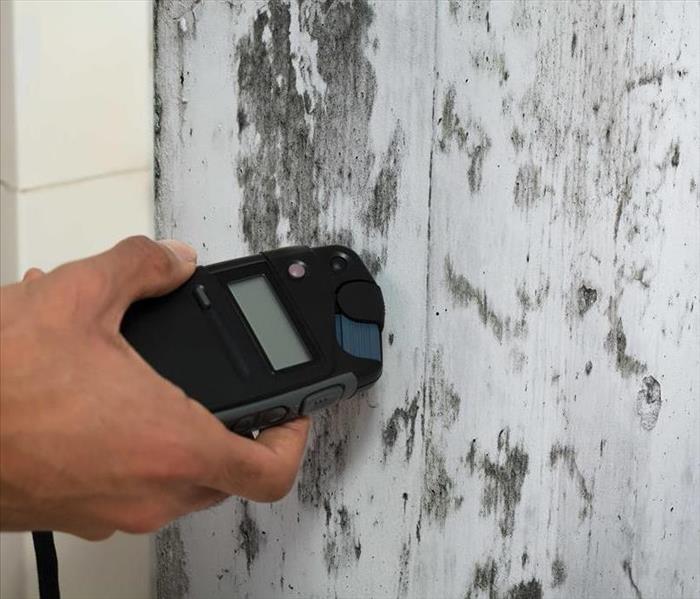 Trust our Specialists and Avoid Secondary Damage in your property.
Trust our Specialists and Avoid Secondary Damage in your property.
A professional response is best when you find water, moisture stains, or black mold in your home or in any of the buildings on your property. One of the main reasons for seeking the work of mold and water remediation professionals is to prevent secondary damage and the increased cost of repairs and cleanup that accompany these issues.
Several Forms of Long-Term Damage, Including the Growth of Black Mold
When your Colorado Springs, CO, home and property are affected by flooding or another form of water damage, it’s natural to be primarily concerned about the standing water in and on your property. However, once that standing water is removed, there’s still a lot of work to do.
There’s a high risk of further harm, including the growth of mold, that can lead to lasting concerns and expensive repairs.
Mold Growth
Why is mold, specifically, a problem? These groupings of black, brown, pink, green, and white fungi cause trouble for homeowners in bathrooms, kitchens, around the appliances, and in basements.
- Mold growth smells bad and is unsightly.
- Spores spread quickly and easily, causing more damage in other areas of the home.
- Colonies eat materials, such as wood, fabric, and even cement, causing deterioration throughout your property.
In most cases, the appearance of mold, including black mold, means there is a water or humidity problem. It’s vital that you address that issue as part of your cleanup and treatment.
Electrical Concerns
As water seeps behind the walls, it may affect the electrical system throughout your home. When water gets into the outlets and sockets, serious problems can occur, and there’s a risk to you of getting shocked or electrocuted.
Deterioration of Metal and Wood
Any metal components of your home will begin to corrode or rust because of standing water. This type of additional damage can weaken the structural integrity of your home. When metal fasteners fail, the resulting destruction of your home could be severe. Wood rot presents similar situations when it affects the wooden elements supporting the home.
Harm to Floors and Walls
When water is allowed to sit for more than 24 hours, the floors and walls may weaken, buckle, and become stained. Further trouble can be seen as structures begin to dry and swollen materials show signs of cracking and breaking. Once this destruction takes place, your flooring, walls, cabinets, and other affected structures must be replaced.
Loss of Belongings
In addition to your home itself, you need to worry about the loss of personal belongings. Water and high humidity affect books, artwork, important documents, furnishings, clothing, and everything else in the home. You may need to replace food, medicines, makeup, and emergency storage.
Justification for a Professional Response
SERVPRO professionals are Here to Help and are Faster to Any Size Disaster, so they can tackle flooding and other water issues before you have to deal with secondary damage. Colorado Springs, CO, technicians are equipped with powerful tools, as well as specific training for recognizing the presence and possibility of black mold, so they can take appropriate actions to keep your home safe. These workers have the time and resources necessary to ensure that the initial problems are fully addressed, preventing secondary harm and lasting damage.
Why You Need an Immediate Response to Water Damage
6/7/2022 (Permalink)
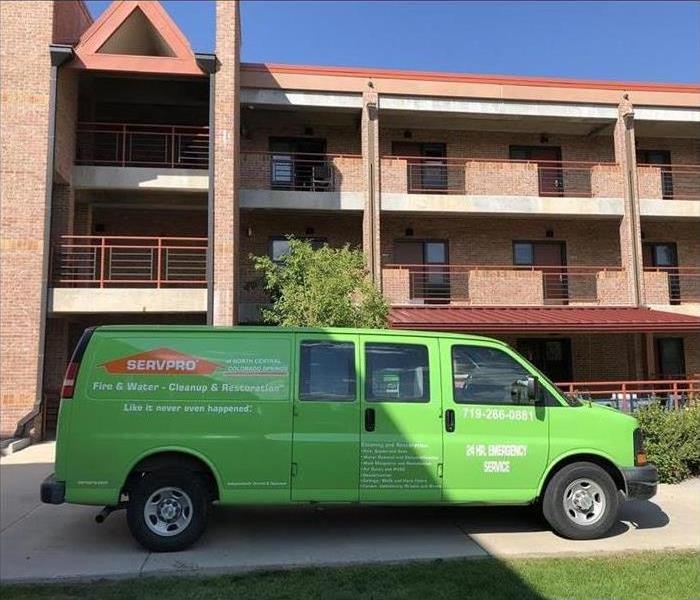 We offer a 24 hour emergency response service always ready to help.
We offer a 24 hour emergency response service always ready to help.
When flooding and other water disasters affect your Colorado Springs, CO, home and family, you don't want to wait several hours for regular business hours. You need solutions immediately. SERVPRO water damage mitigation professionals offer 24-hour emergency response services. This means that if a pipe bursts on a holiday, technicians are available to respond. If heavy storm damages leave your home exposed to flooding, a fast response could prevent further harm.
You Can't Wait a Single Day
The first hours after your home is affected by water damage, many things begin to happen.
- Furniture swells and breaks down.
- Metal items tarnish and rust.
- Fabric and paper items become stained.
- Mold or mildew take hold.
- Drywall weakens and swells.
An immediate response puts the progression of damage on hold while a corrective course of action is put into place.
It's Expensive To Delay
Many situations requiring cleaning and restoration must be addressed immediately. This is because water damage takes place within minutes. Within a short 60-second period, walls, floors, and upholstery absorb water. Finishes on tables and chairs begin to bleed. Cherished photographs start to warp and discolor. If you have to wait more than a 24-hour period for professionals to arrive, the damage becomes much harder to address.
If you have to wait just two days for services, mold may begin to spread. Important framing may warp. Metal fixtures begin to corrode. Paint blisters and wood flooring swells. As damage increases, the efforts and cost of restoring your home increase rapidly. In some cases, the structural safety of your home could be affected.
What a Quick Response Looks Like
SERVPRO franchises in your city are always open, so technicians are ready to respond within a single hour. Before four hours pass, professionals will be at your home. Within eight hours, a plan of action will be in place, and you will be well on your way to getting back on track. A fast response to flooding is crucial; take advantage of 24-hour availability for the protection of your home.
4 Steps Toward Safeguarding Businesses From Storm Damage
6/7/2022 (Permalink)
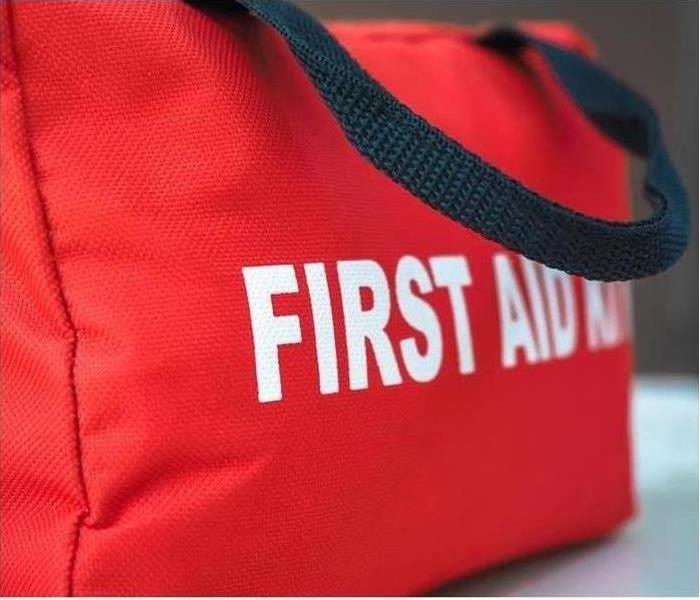 Protect your Business from Further Storm Damage by following our Tips.
Protect your Business from Further Storm Damage by following our Tips.
Even businesses with strong disaster plans are affected by major storms, flooding, or fires. Forty percent of all businesses affected by disasters won't open their doors again. Within one year after the mess has been cleaned up, another 25 percent will fail. This is bad news for just about everyone involved. Fortunately, insurance providers, business owners, and community leaders can take preventative steps before disaster recovery is necessary.
Important Steps to Consider as regards Safeguarding
- Establish Written Business Continuity Plan
These documents should contain the procedures to take when disasters threaten, during disasters, and during the recovery period. For example, if storm damage is severe, business owners may need to relocate the workplace temporarily. Other elements of this plan may include phone trees, information technology procedures, and emergency evacuation responsibilities.
- Schedule Regular Employee Trainings
It isn't enough to cover these storm response procedures in one workshop. Employees need to be familiar and comfortable enough with the steps that they remember and carry them out with ease. When employees are clear about their individual responsibilities and have performed them several times in non-emergency situations, they are more likely to respond calmly during a disaster.
- Keep Emergency Supplies Handy
The right equipment and supplies are vital to the success of a disaster recovery plan. Business owners should have first-aid kits, flashlights, and other emergency supplies within easy reach for employees. Other equipment, such as clean water, food, a generator, and even blankets could further safeguard the well-being of company personnel.
- Store Copies of Key Information in Multiple Sites
During a storm, it may be impossible to access phone numbers through workplace computers. After a flood, in-house copies of insurance policies may have been thoroughly damaged; a hard copy kept in another location could provide needed information. Contact information for cleanup and recovery professionals should be included.
Successful disaster recovery actually begins long before storms hit Colorado Springs, CO. Communities, business leaders, and insurance professionals can do their part in protecting residents by providing documents and resources that increase participation in business continuity plans.
SERVPRO: An Exciting Franchise Opportunity
5/7/2022 (Permalink)
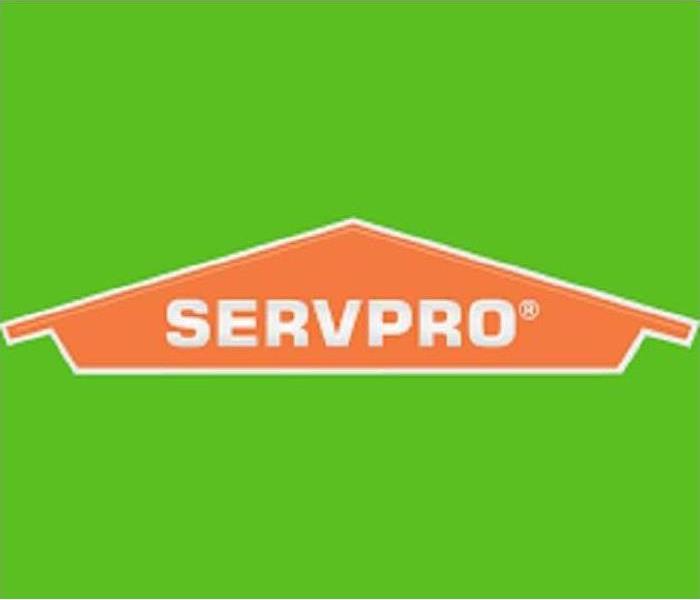 Consider a SERVPRO franchise for a new business opportunity
Consider a SERVPRO franchise for a new business opportunity
When you're ready to take a new business opportunity, consider a SERVPRO franchise. There are many positive factors to consider:
- Locally owned
- Strong corporate support
- Modern technology
- Industry recognition
How do these factors make SERVPRO one of the best opportunities for your next business venture? You could ask a local disaster recovery and restoration technician, and you can do some research into local and corporate opportunities.
Local Ownership
When you own a local franchise, you may already have a strong network that includes family, friends, neighbors, and other business owners. You have a working knowledge and familiarity with the storms, disasters, and emergency situations that are most likely to occur in Colorado Springs, CO. Local ownership also means that you can respond quickly when customers need an immediate response.
Strong Corporate Support
SERVPRO has franchises across the country with strong support from corporate headquarters. Corporate teams support franchise owners by facilitating training and sharing requirements from the Institute of Inspection, Cleaning and Restoration Certification. Corporate representatives help franchise owners maintain a high level of quality for consistency from one franchise to the next.
Modern Technology
In addition to purchasing cutting-edge machinery and cleaning supplies, each SERVPRO franchisee has access to a comprehensive database and information-sharing software system that connects all franchise owners with insurance agents and other professionals.
Industry Recognition
SERVPRO is recognized as one of the top disaster recovery and restoration franchise companies in the country. This recognition comes from Entrepreneur's Franchise 500 List and from IICRC, the industry certification leader. Corporate representatives and franchise owners work hard to maintain compliance with the highest industry standards for restoration and safety results. Each technician is certified to provide top quality results.
Available Opportunities
A SERVPRO franchise is a solid business investment based on several appealing factors. Reach out to company representatives to learn more about the opportunities open in your area. This may be a great time for you to take a new step forward.
Best Practices for Dealing With a Basement Flood
4/22/2022 (Permalink)
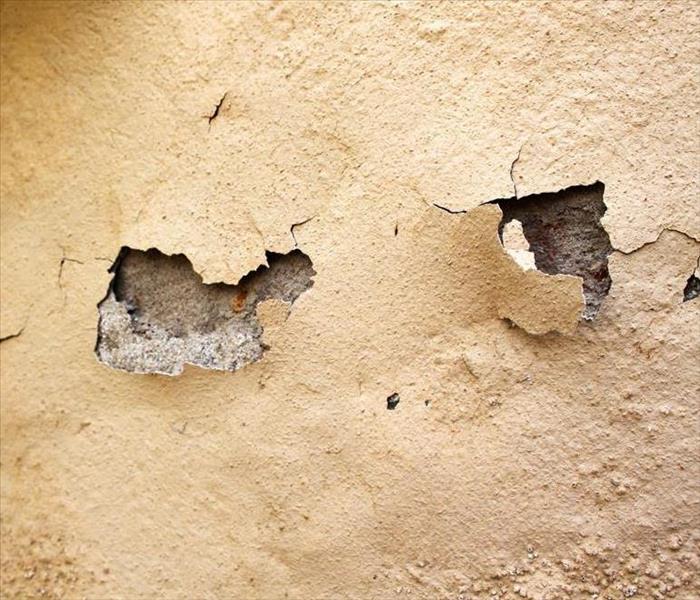 Be ready to face a Basement Flood by Following these Practices.
Be ready to face a Basement Flood by Following these Practices.
One of the most disappointing scenarios you can face as a homeowner is when you have a basement flood. This can happen due to a plumbing problem inside your home or because of an inundation of water from a rising stream or lake outside the property. Either way, it spells trouble.
The situation is often too difficult to handle on your own, so you need an experienced SERVPRO franchise in your area. Fortunately, your location in Colorado Springs, CO, is likely to have a service that is Faster to Any Size Disaster and that knows the best practices to remove floodwater in a basement.
The Need for a Quick Response
Any flooded area in your home demands a rapid response, so you need to contact a company that is available at all hours of the day and night. A company that can't get to your home for a couple of days will not work, as the damage from floodwaters grows worse over time. In just a day or two, the conditions for mold growth can develop and materials in your home can become saturated quickly.
The Necessity for Water Removal From a Basement Flood
The first order of business is to get the water out as soon as possible. A company with the right tools will use industrial pumps and vacuums to pump out the water. If this task is handled efficiently it can reduce water damage and limit the overall expenses and losses to the homeowner. It also has several other advantages:
- Makes the scene safer
- Saves on damage to electrical components
- Enables the salvaging of personal items
- Prevents the development of mold in the home
The Importance of Drying the Basement
Even once all the water is pumped out, the basement remains wet, so the area must be dried out with fans, dehumidifiers, air circulation, ventilation and other methods. Workers might also use advanced techniques to measure the moisture content of the room or to look behind walls.
Wet materials should be removed from the basement to dry out or to be tossed away if they are beyond restoring. If the water from the flood was contaminated in any way, most items will need to be thrown out. At this time, you should look into your insurance coverage to see what your policy will cover.
The Critical Nature of Cleaning and Sanitizing
Dirty water can leave a harmful residue over just about anything. This requires sophisticated cleaning techniques and powerful cleaning products. For best results, the basement should be cleaned according to industry guidelines.
The final stage of the process involves an inspection that looks for hidden damages. Perhaps the drywall has been impacted or the carpeting is ruined. A full-service restoration company can take care of these matters for you. Technicians for the cleanup company can also look into why you had standing water in the basement and recommend remedies so it won't happen again. Sometimes this is as simple as cleaning drains and gutters to allow for the best flow of water in and around your home.
A basement flood is a stressful event. Working with professionals can result in a fast and effective cleanup.
What Is Category Three Water Damage?
11/26/2021 (Permalink)
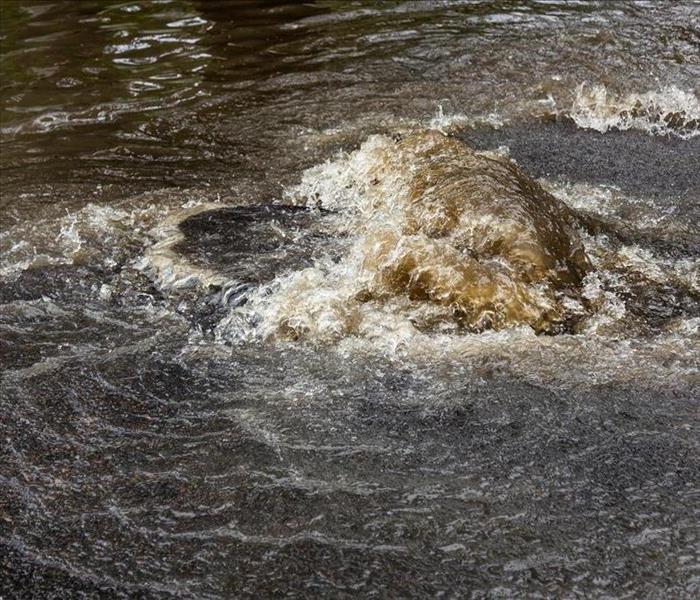 Category three of water can ruin your Colorado Springs, CO home.
Category three of water can ruin your Colorado Springs, CO home.
When your Colorado Springs, CO, home is affected by a flood, you may not immediately be thinking about the degree of toxins in the water. Water damage is probably your first concern; it needs to be removed as soon as possible to mitigate the damage. Unfortunately, it can be much more severe than just the damage caused by the water. There are three categories of floodwater, with category 3 (aka black water) being extremely contaminated, containing hazardous materials like raw sewage and chemicals.
What To Expect During Category Three Flood Damage Restoration
Because of the toxicity of category 3 water, it's essential to call water damage restoration experts to handle the cleanup. They have the expertise and professional equipment to safely and thoroughly clean and inspect the home. Here is what you can expect during the process:
1. Personal Protective Equipment
The cleanup crew will wear PPE to protect their safety and cross-contamination to unaffected areas of the building. This PPE will include hair covers, safety goggles, respirators, coveralls, gloves, and rubber boots.
2. Inspection
The professionals will thoroughly inspect the area to determine the extent and severity of the damage. This inspection will help them decide what measures to use to restore the space.
3. Containment
The team will contain the affected area using heavy plastic sheeting, negative air chambers, or other measures. This containment will help prevent cross-contamination and keep unauthorized people out of the work area to maintain everyone's safety.
4. Extract Standing Water
The experts will then extract the standing water from the area by using industrial pumps. This is an effective way to remove a lot of black water and smaller debris quickly.
5. Remove Remaining Solid Debris
Next, they'll remove the solid debris, such as raw sewage, from the area. This is usually performed with shovels.
6. Remove Contents
All contents, both damaged and undamaged, will be removed to be either disposed of or cleaned and restored.
7. Tear Out
Damaged materials such as drywall and carpeting will be torn out and removed. The soaked areas will not be salvageable due to the water damage and contamination that can lead to more issues such as mold.
8. Clean and Sanitize
The technicians will thoroughly clean and sanitize everything that remains. This is one of the most critical parts of the sewage cleanup process.
9. Dry
The entire area and its contents will then have to be dried thoroughly and within 48 hours. The professionals will use industrial-grade fans, dehumidifiers, heaters, and other means to remove the remaining moisture.
10. Inspect
The technicians will perform a final inspection. The inspection will help them ensure that the area is free of contaminants, additional damage, and possible mold growth.
11. Rebuild
After the cleanup process is complete, it's time to rebuild the part of the destroyed structure. New flooring and other materials will probably be required.
A home flood is a traumatic experience; water can ruin a lot fast. When it's black water, the severity is much worse, though. Hopefully, you will never be affected by category 3 floodwaters, but now you know what to expect during the restoration process if you are.
Why Does IICRC Certification Matter?
9/23/2021 (Permalink)
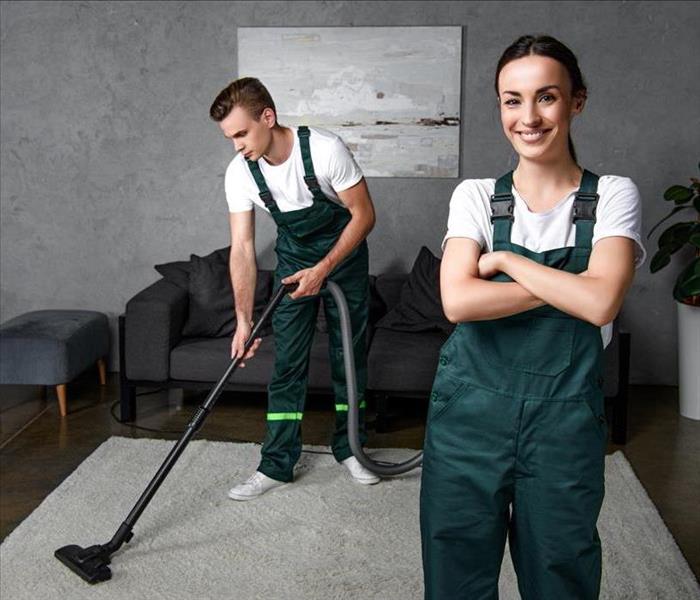 The IICRC certifications set high ethics, health, and safety standards.
The IICRC certifications set high ethics, health, and safety standards.
If you've ever researched the cleaning and restoration companies in Colorado Springs, CO, you've probably come across the phrase, "IICRC certified." Just seeing the phrase attached to a cleaning and restoration company may be reassuring, but to really appreciate the benefits of this 3rd party certification, you should spend a minute or two learning what it represents. With a better understanding, you'll make sure that any industry professionals have this qualification from industry leaders.
The IICRC Confirmation
The Institute of Inspection Cleaning and Restoration Certification is a non-profit organization that sets standards within the inspection, cleaning, and restoration industries. For almost half a century, the organization has established health and safety standards, as well as ethics standards for professionals in the industry. They influence standards around the world and work closely with the American National Standards Institute. Cleaning and restoration professionals with IICRC certifications have demonstrated a thorough understanding of industry skills. Additionally, the organization provides training for professionals who want to improve in specific areas.
Courses Available Through the Institute
Property damage cleanup and restoration work is a broad term that covers many types of work. Professionals in the industry must be prepared to clean up and mitigate damage caused by fire, water, and mold. For example, technicians working on floors need to understand how carpeting, hardwoods, and cement floors are affected by various types of damage and how to respond to that damage. Here are just a few examples of course titles:
- Applied Microbial Remediation Technician
- Building Moisture Thermography
- Commercial Drying Specialist
- Contents Processing Technician
- Leather Cleaning Technician
- Odor Control Technician
- Trauma and Crime Scene Technician
Professionals may complete a course to earn a mold mitigation certificate or a course in commercial carpet maintenance. When you hire a professional with certification from this industry leader, you can be confident that quality workmanship will be completed in accordance with industry standards.
Methodology Approved by the Institute
If your home is exposed to damage, such as a burst pipe or a kitchen fire, you'll probably do a quick search for a clean-up and restoration company. You may discover that you have a few options in your area with comparable prices. How will you decide which to choose? An uncertified company can't guarantee that the damage in your home will be handled appropriately. Mistakes made during the cleanup and repair processes can actually lead to more damage and greater expense.
Expertise Earned Through Training
Water, fire, and mold damage cleanup professionals who have been trained and who have earned their certification have already invested a lot of time and money to become skilled at their work. These professionals tend to have great reputations for top-quality work with high levels of client satisfaction.
You don't have to choose property damage restoration professionals with certification. After all, a newly established technician without training may be much cheaper in the short run. However, when you understand that every system in your home has a bearing on other systems, it becomes more important to you that repairs are handled with expertise.
Hiring a company with IICRC credentials is in your best interests. You can be confident that these technicians have the training and knowledge to leave your home in better shape than their uncertified competitors.
3 Steps To Take When You Have a Broken Pipe
7/28/2021 (Permalink)
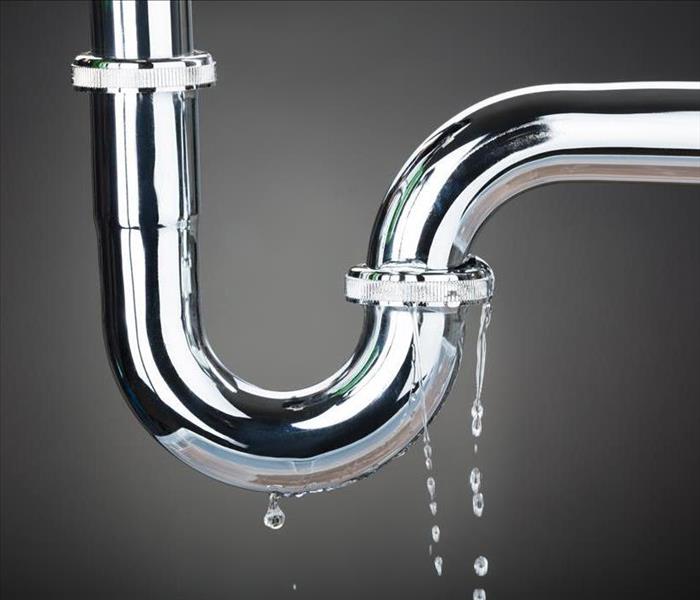 If you suspect you have a broken pipe in your Colorado Springs, CO, home, contact a professional.
If you suspect you have a broken pipe in your Colorado Springs, CO, home, contact a professional.
Problems with the plumbing system are one of the most common causes of water damage for property owners. If you have discovered or suspect you have a leaking or broken pipe, it is important to take prompt action to prevent future damage.
1. Look For Signs of a Broken Pipe
Sometimes it is obvious when you have broken pipes, other times you may only suspect it. If you are noticing unexplained puddles of water, water pressure problems, discolored water, wall stains, increases in your water bill, water sounds in your walls, unusual pipe noises, or water smells, you may have a burst or leaking pipe. Contact a plumber in Colorado Springs, CO, to make repairs as soon as possible.
2. Shut Off the Water
When you discover a broken or leaking pipe, your priority is to prevent additional water damage by shutting off the water. You can do this by closing the main water valve to the affected building. Open your faucets and flush your toilets to drain the remaining water in the pipes. Turn your boiler or water heater off during this process.
3. Remove the Water
Once you have stopped water from leaking into your building, remove standing water with a mop and bucket or wet/dry vacuum. If there is a large amount of water, you may need to contact a water remediation company to do water cleanup. Open doors and windows and run fans and dehumidifiers to speed drying. Excess moisture that remains in your building for longer than 24 to 48 hours can lead to mold and mildew growth. If your plumbing has been leaking for an extended period, you may already have some mold that needs to be removed.
Water damage from burst or leaking pipes is a common problem. However, you can reduce your chances of sustaining large amounts of damage by taking quick action to repair your plumbing and dry out your building.
5 Steps for Cleaning After a Sewage Backup
7/28/2021 (Permalink)
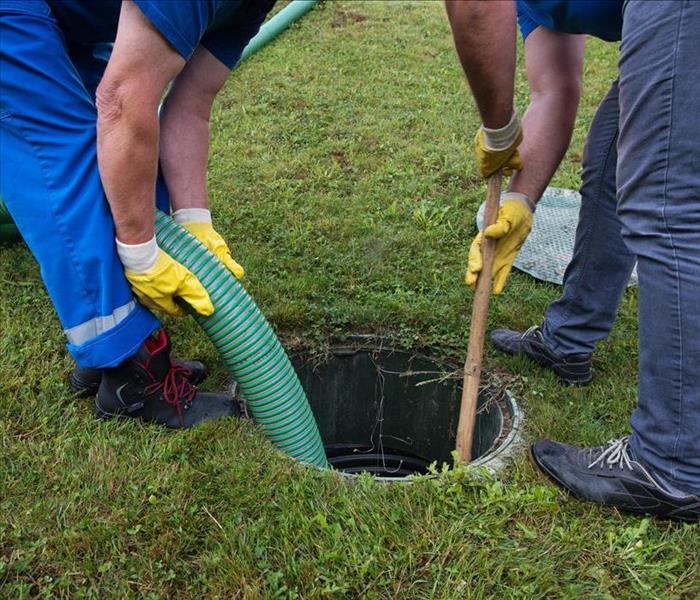 Residential sewage cleanup can be disgusting. Follow these steps or hire a professional team to take care of it.
Residential sewage cleanup can be disgusting. Follow these steps or hire a professional team to take care of it.
A sewer backup could be one of the worst things to happen to your Colorado Springs, CO, home. Not only is it an unsanitary mess, but it creates a horrendous odor. It's something no one ever wants to occur, but the key is to be proactive and learn how to mitigate the damage if it does happen. Here are some steps for residential sewage cleanup.
1. Turn Off Electricity
First, it's crucial to shut off the electricity to the affected area. If electronics or outlets came in contact with the water, an electrical current could be flowing through the water. If you can't safely navigate to the power breaker, you must call an electrician to turn it off before anyone can enter the space.
2. Wear Personal Protective Equipment
When you're ready to begin work in the area, stay safe by wearing PPE. Safety glasses, a face mask, and protective gloves are standard for sewage cleanup. Don't wear the PPE outside of the affected area, as it could spread the germs to unaffected areas of the house.
3. Remove Water
You'll have to remove all of the standing water first. The most efficient and effective method of removing water is by using a wet/dry vacuum. It can quickly and safely extract water and small debris. Water damage restoration professionals utilize commercial-grade pumps for this.
4. Clean and Disinfect Everything
Next, you must clean and disinfect the affected area and contents. Disinfection is essential for anything that has come in contact with sewage and harsh chemicals.
5. Dry Everything
Finally, you must dry it thoroughly as quickly as possible. The more prolonged moisture is left to linger, the more damage it'll do. Mold growth also begins within 24 to 48 hours. People typically use dehumidifiers and fans.
Whether you have a flooded toilet or a major sewer backup, sewage cleanup is going to be unpleasant, to say the least. However, understanding the basic steps to take could benefit you in the future.
SERVPRO of North Central Colorado Springs Facebook page
6/23/2021 (Permalink)
 Facebook on a mobile device.
Facebook on a mobile device.
Come and like us on our Facebook page: SERVPRO of North Central Colorado Springs.
Follow us on our jobs and community activities, get helpful information on seasonal fire, water, and mold prevention.
SERVPRO of North Central Colorado Springs is locally owned and operated—so we’re a part of this community too. We are also part of a national network of over 1,700 Franchises, which enables us to respond quicker with more resources. For major storms and disasters, we can call upon special Disaster Recovery Teams strategically located throughout the country.
SERVPRO of North Central Colorado Springs proudly serves Colorado Springs, Fountain, Security-Widefield, Black Forest, Peyton, Calhan, Woodland Park, Ellicott, and all of Elbert and El Paso County. Call us with your mitigation concerns at (719) 266-0881
Health Care Facility Cleanup Services
6/2/2021 (Permalink)
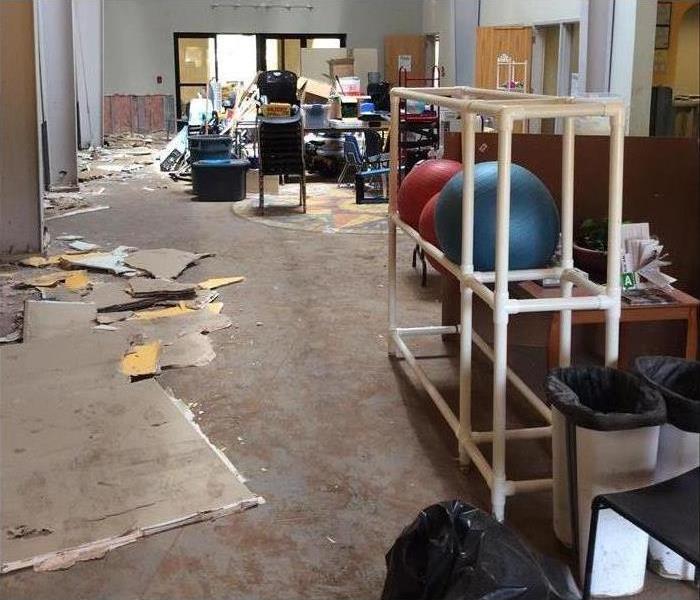 A Colorado Springs Healthcare Facility with Water Damage
A Colorado Springs Healthcare Facility with Water Damage
We understand that time is crucial for both your operations and your patients. Our employees know how to handle regulated medical waste and undergo special training to work in operating rooms and other restricted areas, always adhering to HIPPA regulations. We also coordinate with environmental and infection control teams to monitor progress and make sure that all necessary health certifications are obtained prior to completing any job. Our number one priority is to quickly and safely take full responsibility of your cleanup needs so that you are free to focus on your number one priority: the patients.
At SERVPRO of North Central Colorado Springs our professionals are trained in adhering to the highest sanitation standards.
OUR EXPERIENCE
Our experience in the healthcare industry has given us the ability to provide a variety of detailed services for the following healthcare facilities:
- Hospitals
- Assisted Living Centers
- Outpatient Surgical Centers
- Electronics and Machine Restoration
Hospice Facilities - Senior Living Facilities
- Medical Office Buildings
- Document Drying and Restoration
SERVPRO of North Central Colorado Springs is locally owned and operated—so we’re a part of this community too. We are also part of a national network of over 1,700 Franchises, which enables us to respond quicker with more resources. For major storms and disasters, we can call upon special Disaster Recovery Teams strategically located throughout the country.
We are an IICRC Certified Firm
6/1/2021 (Permalink)
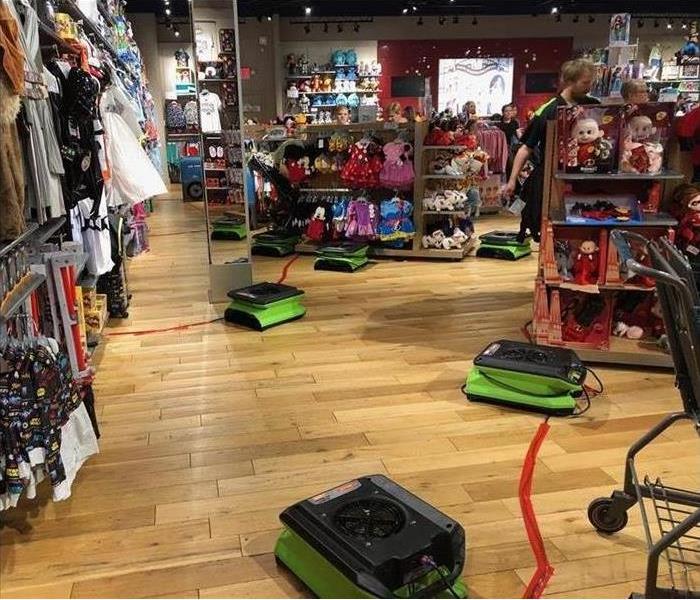 Water Damage after a Clean water source leak.
Water Damage after a Clean water source leak.
SERVPRO of North Central Colorado Springs is an IICRC firm.
The Institute of Inspection, Cleaning and Restoration Certification (IICRC) creates the standards for the restoration industry and provides training and certification to restoration companies. IICRC Certified Firms have the right to display the IICRC Certified Logo.
The IICRC Develops The Standards For The Restoration Industry
The IICRC has been the driving force in establishing the main industry standards and reference guides for professional carpet cleaning, water damage restoration and mold remediation. These IICRC standards take years to develop and require the coordination of experts in the field: manufacturers, industry organizations, insurance professionals, training schools, contractors, and public health professionals.
Every five years, the standards are reviewed and updated. The water damage restoration field changes rapidly with advancements in technology and science, and therefore the standards must evolve to keep pace.
Insurance Practices for Issues With Mold
5/3/2021 (Permalink)
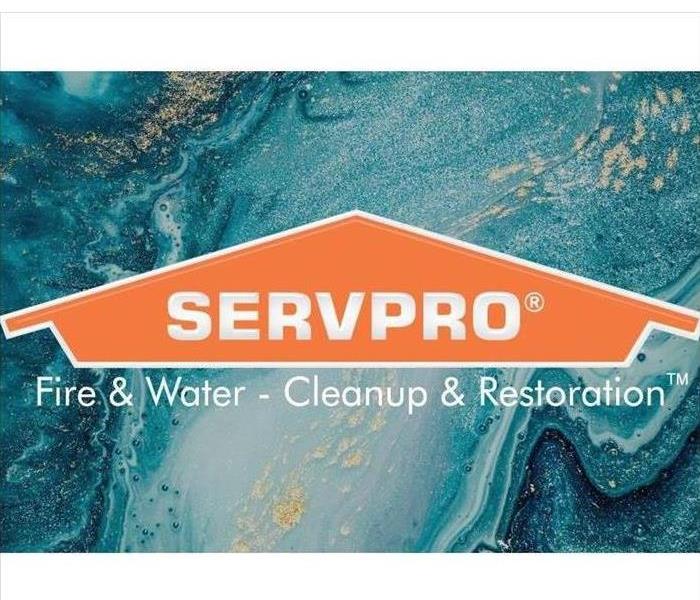 Mold grows where there is a significant presence of water
Mold grows where there is a significant presence of water
Mold litigation has been a cause of concern for many insurance providers, as increased attention on mold has many contractors, property owners, and employers feeling the pressure for cleaner air quality. Mold insurance claims have risen in past years, with bodily injury complaints testing the scientific evidence on symptoms of mold exposure. Understanding how general liability insurance addresses situations involving mold is one way to determine how to approach mold remediation and personal claims of damages.
Mold Exposure Claims
Typically, claims surrounding mold include the following elements:
- Construction defects
- Maintenance delays
Because mold grows where there is a significant presence of water in the structure or high levels of humidity in the air, these reasons are seen as initiating the conditions for growth. The resulting damage to the property and any costs incurred for the professional remediation and cleanup are sometimes excluded from a general liability policy, depending on the terms of the coverage, but most often are included.
Inevitably, those looking to capitalize on a settlement may also put forth claims of bodily injury during their mold insurance claims. These are often more successful than a claim recouping the expense of remediation, as a secondary property damage claim would be opened to address those costs.
Commercial properties are at a disadvantage when it comes to claims involving mold and damage, as they are held against pollution exclusion standards as well as owned, rented, or occupied building exclusions. This can make it more difficult to pinpoint where the liability for mold issues falls, and insurance companies can choose to make honoring the general liability policy difficult.
The details of mold insurance claims are incredibly complex and best explained by a local insurance agent with experience underwriting specific policies and filing damage claims. The nature of the claim, as well as the originating source of the mold, will affect the probability of being covered.
What a Professional Sewer Cleanup Company Does
5/1/2021 (Permalink)
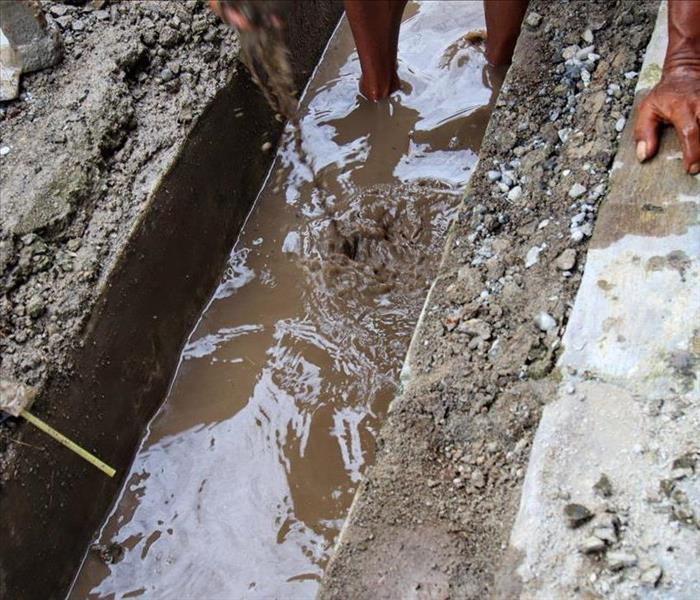 Call a professional for sewage damage cleanup
Call a professional for sewage damage cleanup
Sewage is never fun to clean. If you are having problems with sewage inside your home, there is a good chance that you need to call in a professional sewer cleanup company to deal with it. It is important to know what to do before the professionals come out and what they will do when they get there.
Sewage Damage Cleanup
Your Part
No one likes to deal with sewage, but there are a few things that you need to do before the professionals get there. You should:
- Turn off the water and power to your home
- Tell the cleanup company what you know
If you have to go into the area, you should wear protective equipment to ensure that you are safe. Sewer water contains contaminants the will make you, your children and your pets very sick.
The Professionals Part
The first thing a sewer cleanup company will do is assess the damage. They often make a list of items or areas that need attention and give you an idea of what needs to be fixed or replaced.
Drain
Once the damage is assessed, the company will drain the water out of the area and clean up any solid waste. They usually bring pumps in to do this.
Dry
If the area is still wet, they will bring in fans, drying chemicals and dryers to dry the area completely. This prevents mold and mildew from growing.
Sanitize
Once the area is drained and dry, a good cleanup company will fix any sewer backup or blockage. This is to prevent the problem from happening again. They will also disinfect and sanitize any surfaces using special cleaners.
Remove
Once they are done with the main sewer cleanup, they will remove any items that cannot be cleaned. They understand the proper sewage disposal laws in Colorado Springs, CO, and will dispose of it properly.
If the damage is something simple like a flooded toilet, there is a chance you can take care of it yourself. If it is any more than that, you are better off calling in the professionals to help you deal with cleaning up the sewage.
The Life-cycle of Mold and How to Treat It
2/10/2021 (Permalink)
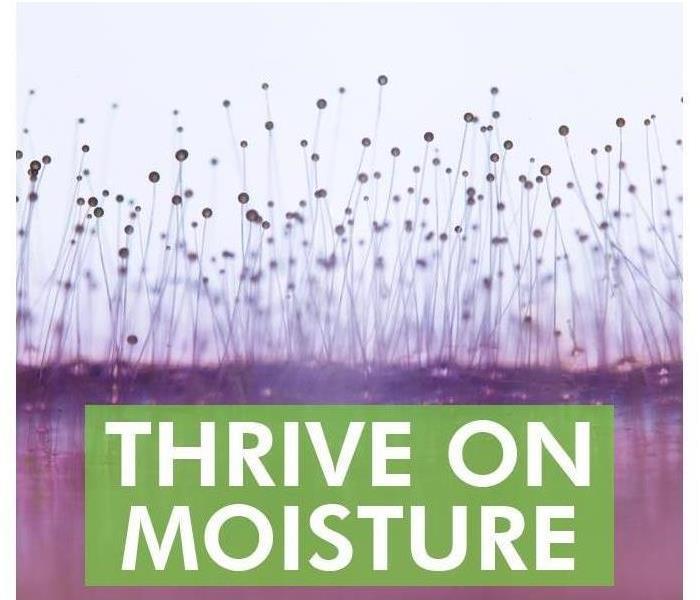 Mold spores thrive on moisture.
Mold spores thrive on moisture.
When you have a home in Colorado Springs, CO, you may be considering contacting a local mold remediation service to help prevent spreading mold on your property. However, preventing mold in the first place can require you to understand how this organism works. Here are three things to remember.
Three Things To Remember About Mold
1. Mold Starts Small
All mold, including black mold, starts small. That is with a single spore too small to be seen by the naked eye. This is why many remediation services will first test for mold to confirm its presence before beginning the cleanup process. These tests may include taking a physical sample of a material where mold may be growing, swabbing a potential area, or air testing. Doing so can confirm the presence of unseen mold, and help identify what type of spores they are dealing with.
2. Mold Grows in Specific Conditions
There are several conditions that are required for spreading mold. Mold is a fungus which means it first must have organic materials which it can break down for nutrients. These may be wood, drywall, carpeting, or plant matter. Mold spores also require moisture which can come from pooling water, condensation, or even a space of high humidity. Mold also grows better in dark or dim areas.
3. Mold Spreads via Spores
Another thing to be aware of during mold remediation, is the fact that mold spreads by spores. This means that in many cases your remediation service will first contain the area where mold is present before beginning clean up. Doing so can help ensure that spores do not migrate to other areas of the home where they can cause future problems.
When learning how to prevent spreading mold in the home, it’s important to understand the life-cycle of mold and how it grows. Remember, mold starts small with a single spore and then absorbs the nutrients around it until it can create more spores and generate a colony. It prefers dark and wet conditions, and if found should be removed as quickly as possible. It’s best to contact a professional for this task.




 24/7 Emergency Service
24/7 Emergency Service














